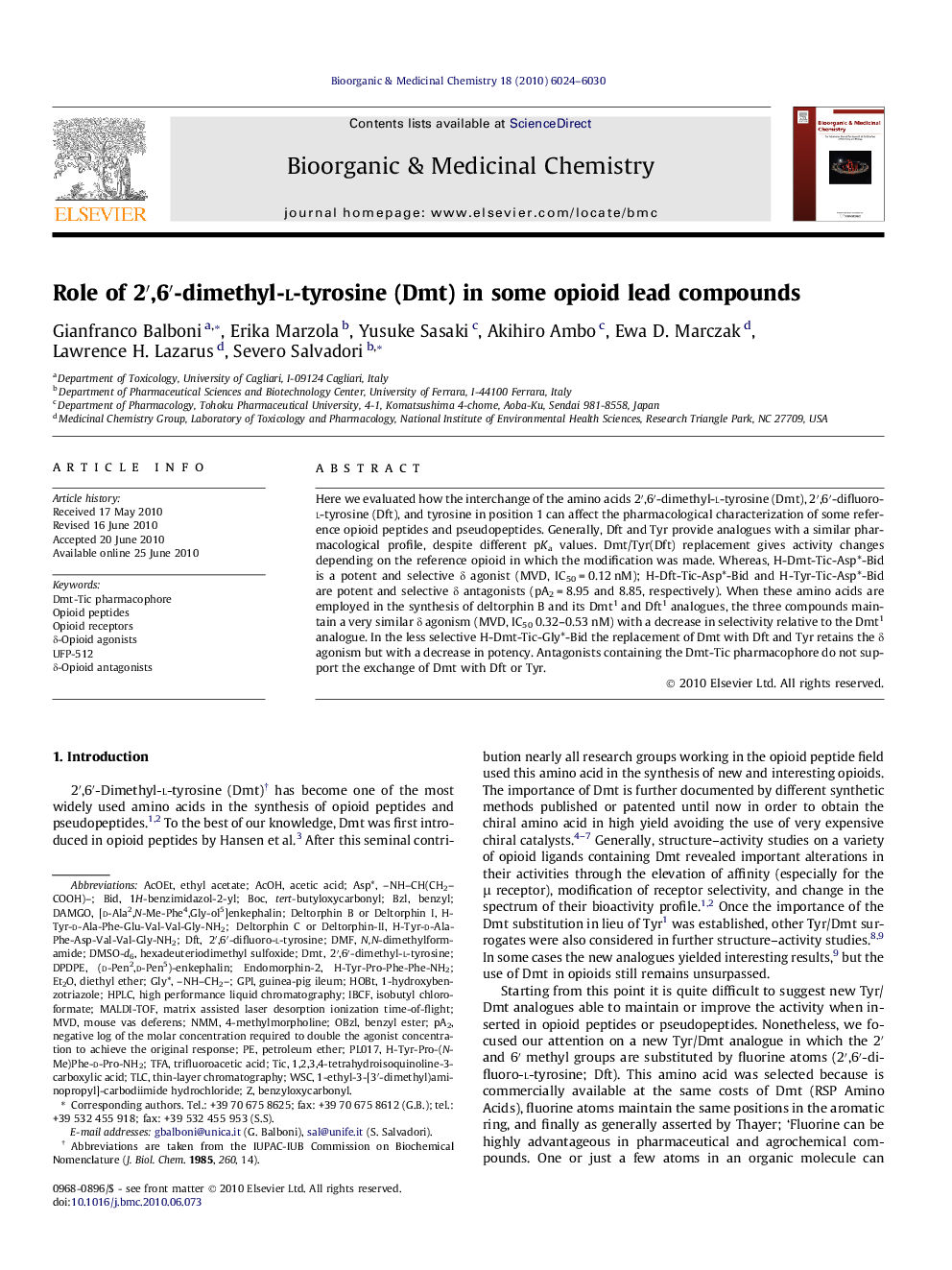| کد مقاله | کد نشریه | سال انتشار | مقاله انگلیسی | نسخه تمام متن |
|---|---|---|---|---|
| 1359072 | 981380 | 2010 | 7 صفحه PDF | دانلود رایگان |

Here we evaluated how the interchange of the amino acids 2′,6′-dimethyl-l-tyrosine (Dmt), 2′,6′-difluoro-l-tyrosine (Dft), and tyrosine in position 1 can affect the pharmacological characterization of some reference opioid peptides and pseudopeptides. Generally, Dft and Tyr provide analogues with a similar pharmacological profile, despite different pKa values. Dmt/Tyr(Dft) replacement gives activity changes depending on the reference opioid in which the modification was made. Whereas, H-Dmt-Tic-Asp∗-Bid is a potent and selective δ agonist (MVD, IC50 = 0.12 nM); H-Dft-Tic-Asp∗-Bid and H-Tyr-Tic-Asp∗-Bid are potent and selective δ antagonists (pA2 = 8.95 and 8.85, respectively). When these amino acids are employed in the synthesis of deltorphin B and its Dmt1 and Dft1 analogues, the three compounds maintain a very similar δ agonism (MVD, IC50 0.32–0.53 nM) with a decrease in selectivity relative to the Dmt1 analogue. In the less selective H-Dmt-Tic-Gly∗-Bid the replacement of Dmt with Dft and Tyr retains the δ agonism but with a decrease in potency. Antagonists containing the Dmt-Tic pharmacophore do not support the exchange of Dmt with Dft or Tyr.
Figure optionsDownload as PowerPoint slide
Journal: Bioorganic & Medicinal Chemistry - Volume 18, Issue 16, 15 August 2010, Pages 6024–6030